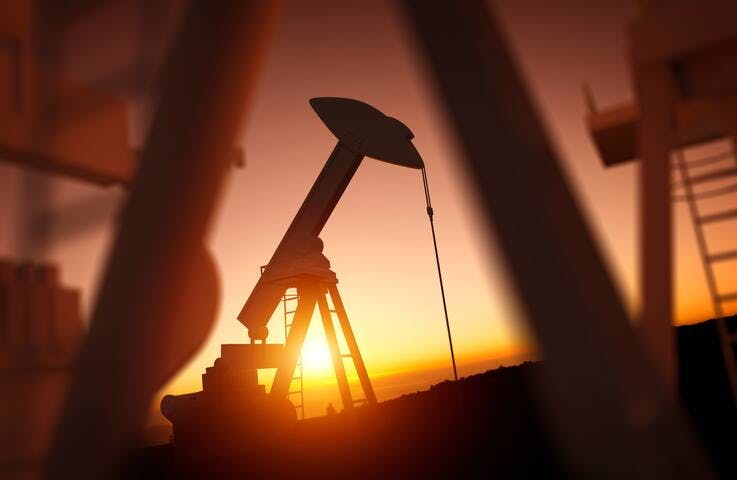Select your geography
Americas
Putin Invades Ukraine: What Investors Need to Know

Michael J. Kelly, CFA
Global Head of Multi-Asset

Steven Oh, CFA
Global Head of Credit and Fixed Income, Co-Head of Leveraged Finance

Russian President Vladimir Putin’s invasion of Ukraine injected heightened uncertainty and volatility to markets, pushing the S&P 500, the Dow Jones Industrial Average, and the Nasdaq into correction or even outright bear market territory, and temporarily driving up oil prices (WTI) near $100/bbl. Looking past the immediate equity index moves, what does the escalation between Russia and Ukraine mean for markets and economies? Our investment heads and chief economist weigh in on the potential impacts as we continue to hope for a peaceful resolution to the conflict.
A new Cold War?
In many ways, it appears that a new Cold War has begun. While the military takeover of Ukraine will likely be swift, a lengthy insurgency could ensue, which would raise the possibility of a direct confrontation between NATO and Russian military forces.
From the outset, the US and Europe had taken a direct military intervention off the table and refrained from specifying what kind of sanctions would be imposed on Russia in case of an invasion; that might explain why markets had remained fairly calm in the run-up to Thursday. Western leaders had made it crystal-clear that Russia would face draconian penalties in case of an attack. Not surprisingly then, the first market reaction was a dramatic collapse of Russia's stock market and a sharp depreciation of the Russian ruble.
Vladimir Putin has been preparing for this “international pariah” role since the invasion of Crimea in 2014 by steering Russia's economy in a more domestic direction while building its military and fortifying the country's foreign exchange reserves. He seems willing to sacrifice the prosperity of the Russian people, if he can reverse some of the territorial impact of the Soviet collapse, which he had called "the greatest geopolitical catastrophe of the century."
Russia surely has the military power to swiftly subdue Ukraine. But it will face a more unified NATO, which has found a new purpose in the crisis after facing the prospect of terminally fracturing not long ago when Donald Trump questioned its purpose.
Economic interdependencies
It’s also worth noting that economic linkages to the West are much more important to Russia than vice versa. In 2020, about a third of Russia's total goods and services exports went to the EU; the share going to China was half that. If you add the UK, the US, Japan, and South Korea, the “Western” share rises above 50%. Meanwhile, in the same year, Russia accounted for less than 2% of German exports and less than 1% for the UK and the US.
Even the energy-dependency argument goes both ways. It's true that Europe gets 25% of its natural gas from Russia, but it also accounts for 80% of Russia's gas exports. Europe would surely suffer economically if Russia decided to cut off gas supplies. But most of the gas is delivered through static pipelines, which would make it very difficult to find a new buyer if Europe gets there first and stops gas imports.
Other economic spillover effects would include even higher energy prices, though that would likely prompt a fiscal policy response in the form of tax cuts or direct energy cost subsidies to cushion the impact on the domestic economies in the West. We are also likely to see a more meaningful increase in military spending, mainly in Europe, and stepped-up efforts to wean the world of hydrocarbons - and thus Putin.
The Russia-Ukraine conflict also complicates the monetary policy outlook. The federal Reserve is arguably miles behind the curve and has already exhausted every opportunity to further delay the withdrawal of its emergency policy stimulus. Putin's invasion will likely worsen the commodity-driven part of the US post-Covid inflation surge. Consumers are already angry due to the high rate of inflation, and barring a recession, the Fed will have no option other than to forge ahead and raise rates even despite the conflict in the Ukraine. The situation in Europe looks quite different. Inflation there is almost solely about energy, and with the fog of war clouding the outlook, the European Central Bank is more likely to delay any plans the bank might have had to raise rates this year.
Market impact: top-down versus bottom-up
How will all this affect the top-down outlook for US markets this year? To date, the US economy's overheating problem is mainly the result of last year's excessive demand stimulus, exacerbated by severe Covid-related supply bottlenecks – and overheating does not mix well with high-performing financial markets.
Fiscal deficit roll-off and tightening of US financial conditions is needed, and welcomed, to dampen excess demand, and with that, excess inflation. The Russia-Ukraine conflict may raise the bar on how much financial condition tightening is necessary. Meanwhile, the Fed is no longer your friend: Don't expect it to pause. After outperforming for years, US assets look poised to underperform until the overheating is addressed.
Coming into 2022, our bottom-up equity market outlook was driven by expectations of another year of strong demand-driven economic growth, with US consumption boosted by healthy household balance sheets and robust business capex intentions on top of the expected huge net-zero-driven global investment wave we are likely to see over the next decade.
Has that outlook changed? Not much. Capex intentions may be put on hold as long as the outlook remains uncertain, although budgets should be maintained, and we might see a pop in pent-up investment spending later on. In fact, capex should continue in critical areas, such as automation and data centers, making these areas the new “defensives” because they offer greater visibility.
European economies need to reconsider their energy dependence on Russia and put a greater emphasis on energy security. This probably means capex in all other energy sources are now back on the table – nuclear in particular, now that it has been given the greenlight under the Sustainable Finance Disclosure Regulation (SFDR).
Broadly speaking, we came into this period with some dry powder on hand, and we are likely to deploy this gradually as the market sells off further.
Impact on Asia and beyond
The Russia-Ukraine crisis could have a pronounced impact on Asian economies as well. Global risk-off contagion is one impact Asia's financial markets will likely experience in the short term. The bigger question is how a broad-based, draconian sanction regime would affect Asia.
On the one hand, Asian economies could benefit from the re-routing of trade flows; for example, as Europe looks for new sources of energy supply. However, in order for Western sanctions to hurt, key economies in Asia would have to come on board, or at least commit to closing their economies as substitute markets for Putin. This would mean blocking Russia from acquiring the same goods they are prohibited from buying in the West, such as technology products, or blocking Asia from selling natural resources to Russia.
Countries like Australia and Japan will likely be quick to join any potential US/EU-led trade embargo. More interesting will be the reaction in India, traditionally a Russian ally, and, even more importantly, in China. It will be difficult to remain neutral, and the risk is rising that the global economy is splintering into a pro- and an anti-sanctions bloc, with diminishing economic linkages between them. How long such a split could last – with North America, Europe, and supporters in Asia on one side, and Russia and its ally countries on the other – will determine how damaging the Russia/Ukraine crisis could be for the global economy.
Key takeaways: Impact on asset markets
Higher commodity-driven inflation, higher defense spending, and momentum behind efforts to wean the world of hydrocarbons should provide tailwinds to real assets while restraining financial assets. In equities, the markets have already entered correction territory, which provides opportunities in select world-class companies with relatively high earnings visibility and attractive valuations. In fixed income, credit market conditions have not deteriorated materially, and market trading has been orderly. Prices are down, as expected, but without broad-based selling pressure. While the coming sanction regime will have an impact on specific sectors and issuers, we see minimal systemic links to the US and other developed credit markets. For emerging market debt, another inflation shock could pose risks. Yet most major EM central banks have been much more aggressive in their response to the Covid-related inflation surge relative to their developed world peers and are not nearly as far behind the curve.
For more insights, see our 2022 Investment Outlook: Opportunities in a Climate of Change.
Disclosure
Investing involves risk, including possible loss of principal. The information presented herein is for illustrative purposes only and should not be considered reflective of any particular security, strategy, or investment product. It represents a general assessment of the markets at a specific time and is not a guarantee of future performance results or market movement. This material does not constitute investment, financial, legal, tax, or other advice; investment research or a product of any research department; an offer to sell, or the solicitation of an offer to purchase any security or interest in a fund; or a recommendation for any investment product or strategy. PineBridge Investments is not soliciting or recommending any action based on information in this document. Any opinions, projections, or forward-looking statements expressed herein are solely those of the author, may differ from the views or opinions expressed by other areas of PineBridge Investments, and are only for general informational purposes as of the date indicated. Views may be based on third-party data that has not been independently verified. PineBridge Investments does not approve of or endorse any republication of this material. You are solely responsible for deciding whether any investment product or strategy is appropriate for you based upon your investment goals, financial situation and tolerance for risk.
Recent Insights


